Abstract
OBJECTIVES. Latino adolescents in two urban New England areas were surveyed to assess risk of human immunodeficiency virus (HIV) transmission. METHODS. Probability of HIV infection during the previous 6 months was estimated from self-reported sexual contacts, condom usage rates, and number of partners. Teens were also asked to show condoms in their possession to the interviewer to validate self-reports of condom use. RESULTS. Overall, 8% of the 586 respondents were classified as high risk for HIV infection (estimated infection probability greater than .0001), 34% were at moderate risk, and the remaining 58% were classified as not at risk (no sexual activity or needle sharing). Teens who said they had purchased condoms or claimed to have used them recently were more likely than others to have condoms in their possession at the time of the interview. CONCLUSIONS. These estimates suggest that a small percentage of Latino adolescents may be at substantial risk for HIV infection over periods as short as 6 months, that self-reports of recent condom use are strongly related to condom possession, and that questionnaire items regarding condom use at last intercourse are poor surrogates for HIV risk.
Full text
PDF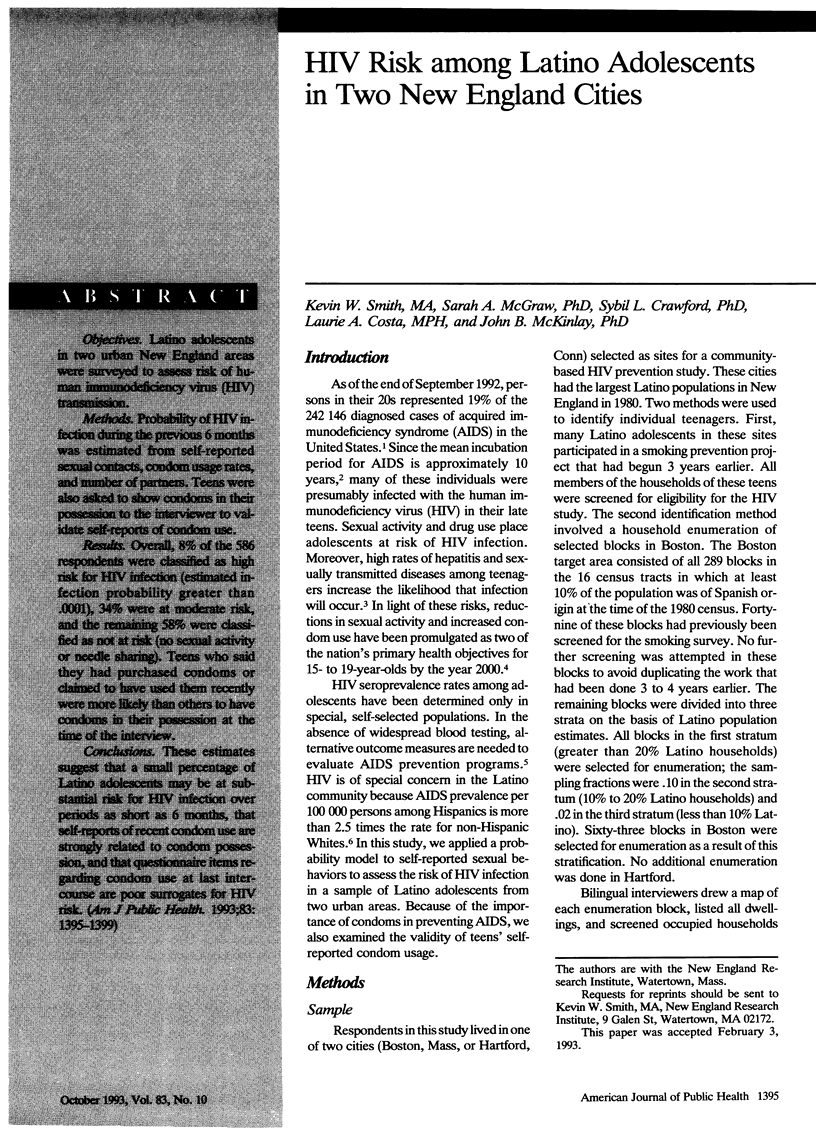
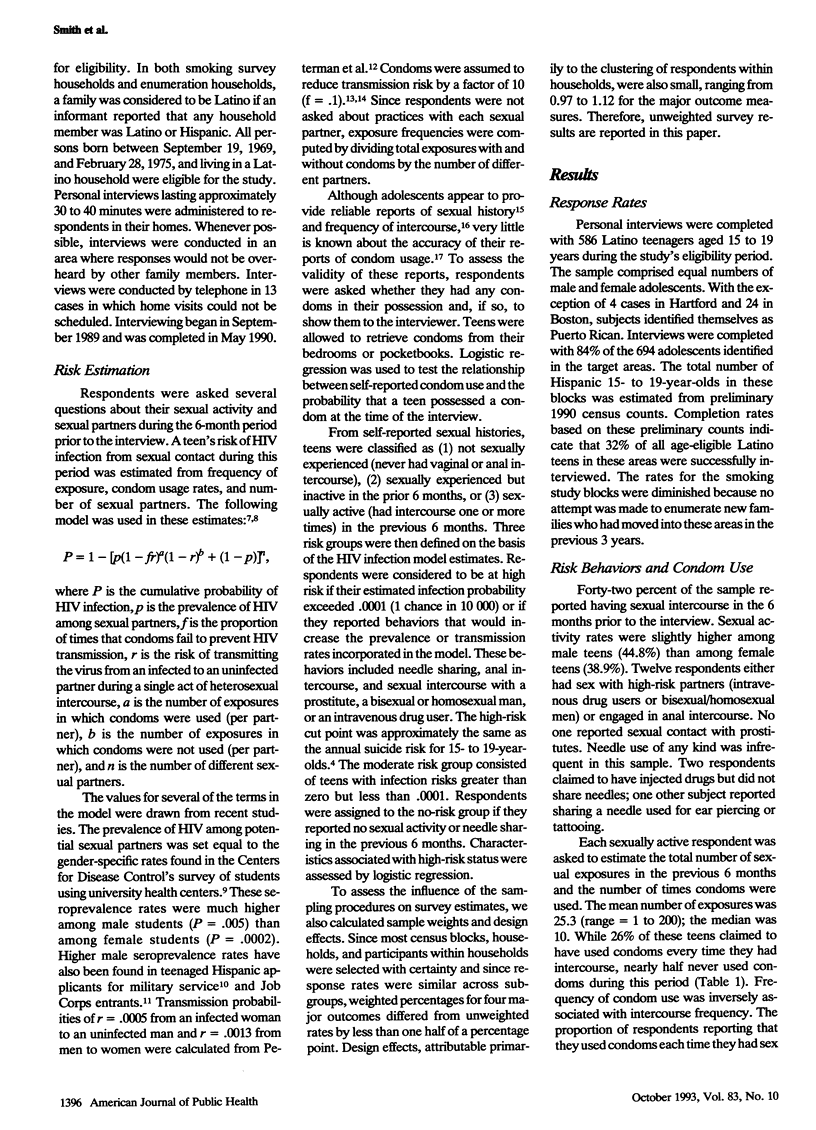
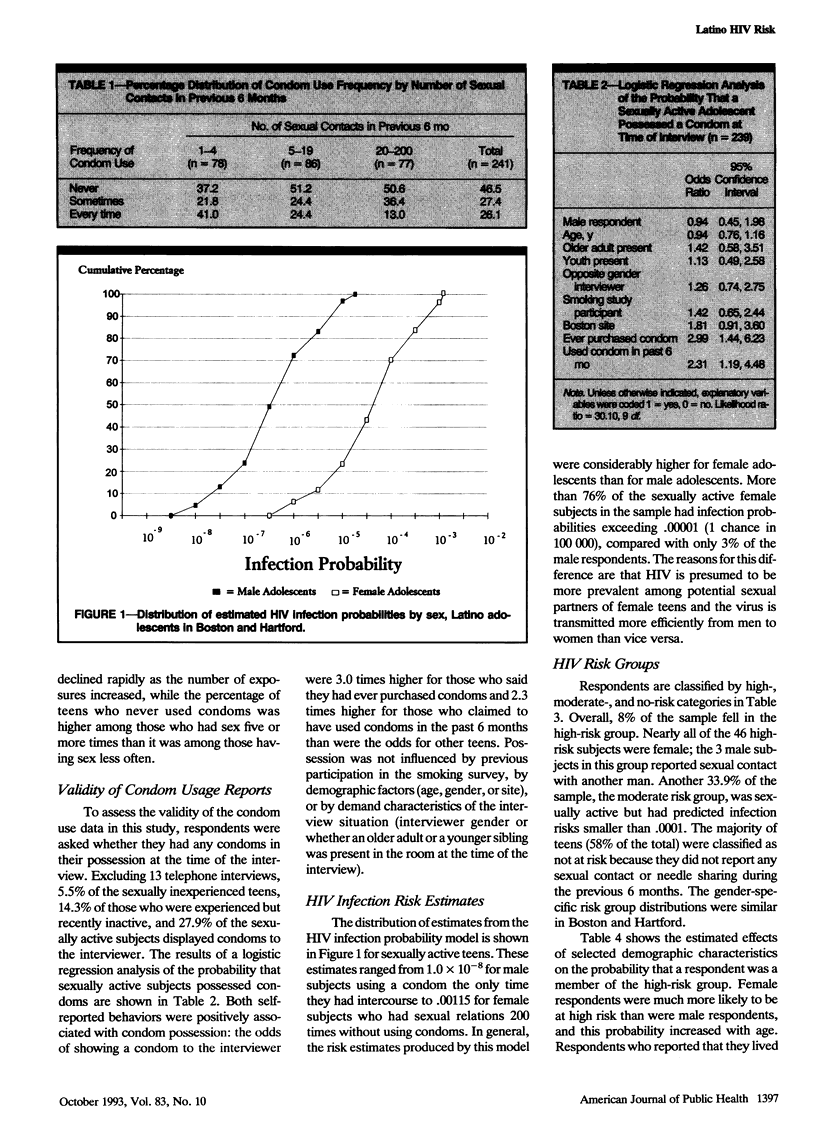
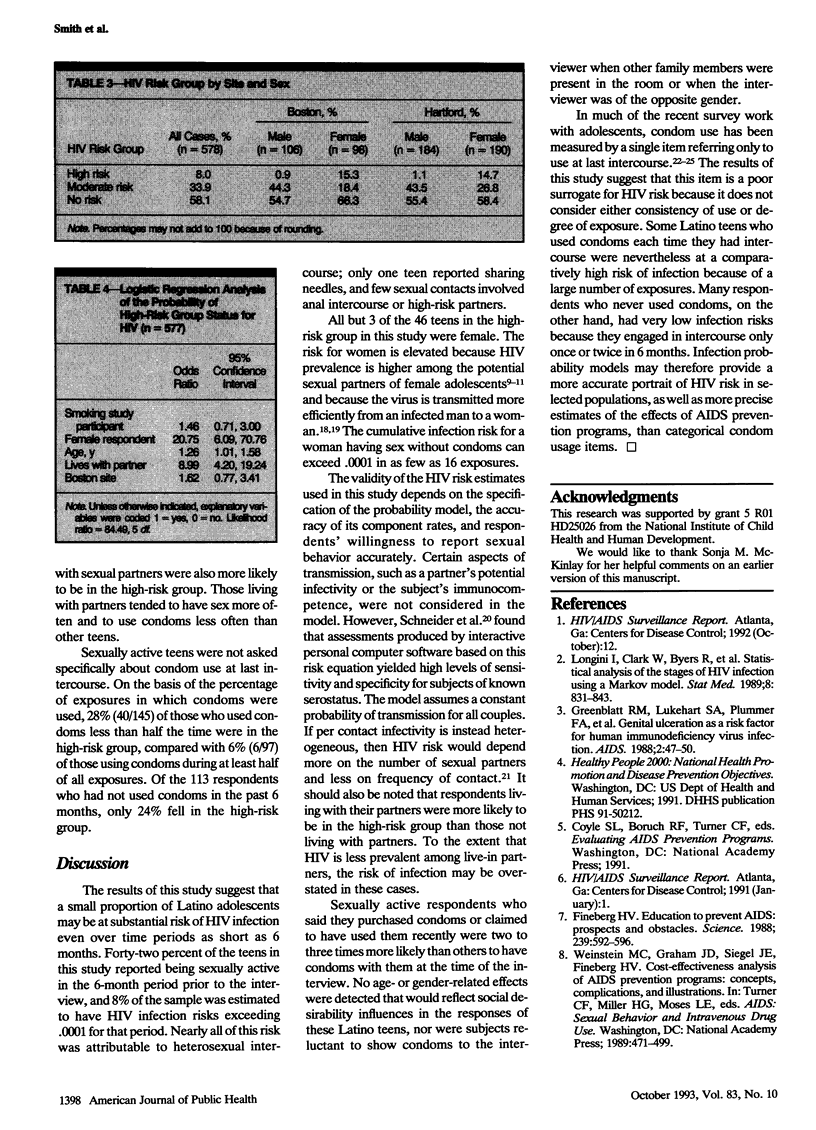
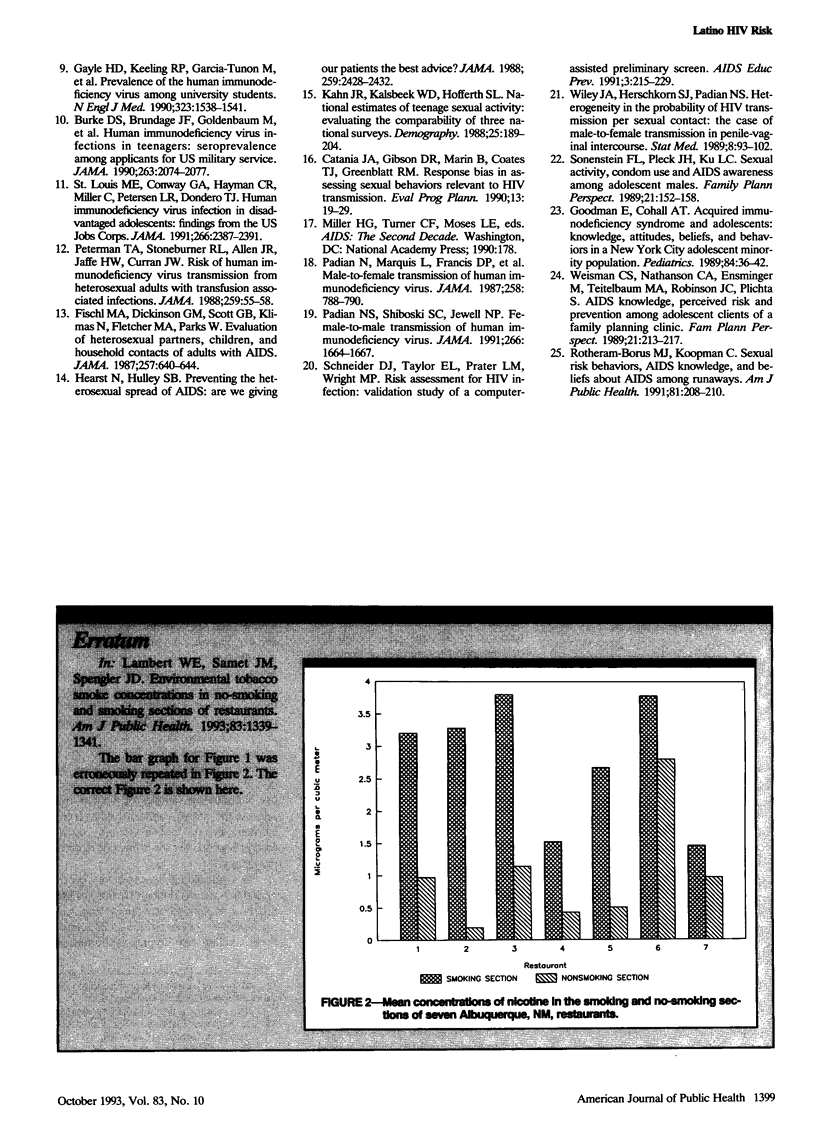
Selected References
These references are in PubMed. This may not be the complete list of references from this article.
- Burke D. S., Brundage J. F., Goldenbaum M., Gardner L. I., Peterson M., Visintine R., Redfield R. R. Human immunodeficiency virus infections in teenagers. Seroprevalence among applicants for US military service. The Walter Reed Retrovirus Research Group. JAMA. 1990 Apr 18;263(15):2074–2077. doi: 10.1001/jama.263.15.2074. [DOI] [PubMed] [Google Scholar]
- Fineberg H. V. Education to prevent AIDS: prospects and obstacles. Science. 1988 Feb 5;239(4840):592–596. doi: 10.1126/science.3340845. [DOI] [PubMed] [Google Scholar]
- Fischl M. A., Dickinson G. M., Scott G. B., Klimas N., Fletcher M. A., Parks W. Evaluation of heterosexual partners, children, and household contacts of adults with AIDS. JAMA. 1987 Feb 6;257(5):640–644. [PubMed] [Google Scholar]
- Gayle H. D., Keeling R. P., Garcia-Tunon M., Kilbourne B. W., Narkunas J. P., Ingram F. R., Rogers M. F., Curran J. W. Prevalence of the human immunodeficiency virus among university students. N Engl J Med. 1990 Nov 29;323(22):1538–1541. doi: 10.1056/NEJM199011293232206. [DOI] [PubMed] [Google Scholar]
- Goodman E., Cohall A. T. Acquired immunodeficiency syndrome and adolescents: knowledge, attitudes, beliefs, and behaviors in a New York City adolescent minority population. Pediatrics. 1989 Jul;84(1):36–42. [PubMed] [Google Scholar]
- Greenblatt R. M., Lukehart S. A., Plummer F. A., Quinn T. C., Critchlow C. W., Ashley R. L., D'Costa L. J., Ndinya-Achola J. O., Corey L., Ronald A. R. Genital ulceration as a risk factor for human immunodeficiency virus infection. AIDS. 1988 Feb;2(1):47–50. doi: 10.1097/00002030-198802000-00008. [DOI] [PubMed] [Google Scholar]
- Hearst N., Hulley S. B. Preventing the heterosexual spread of AIDS. Are we giving our patients the best advice? JAMA. 1988 Apr 22;259(16):2428–2432. [PubMed] [Google Scholar]
- Kahn J. R., Kalsbeek W. D., Hofferth S. L. National estimates of teenage sexual activity: evaluating the comparability of three national surveys. Demography. 1988 May;25(2):189–204. [PubMed] [Google Scholar]
- Longini I. M., Jr, Clark W. S., Byers R. H., Ward J. W., Darrow W. W., Lemp G. F., Hethcote H. W. Statistical analysis of the stages of HIV infection using a Markov model. Stat Med. 1989 Jul;8(7):831–843. doi: 10.1002/sim.4780080708. [DOI] [PubMed] [Google Scholar]
- Padian N. S., Shiboski S. C., Jewell N. P. Female-to-male transmission of human immunodeficiency virus. JAMA. 1991 Sep 25;266(12):1664–1667. [PubMed] [Google Scholar]
- Padian N., Marquis L., Francis D. P., Anderson R. E., Rutherford G. W., O'Malley P. M., Winkelstein W., Jr Male-to-female transmission of human immunodeficiency virus. JAMA. 1987 Aug 14;258(6):788–790. [PubMed] [Google Scholar]
- Peterman T. A., Stoneburner R. L., Allen J. R., Jaffe H. W., Curran J. W. Risk of human immunodeficiency virus transmission from heterosexual adults with transfusion-associated infections. JAMA. 1988 Jan 1;259(1):55–58. [PubMed] [Google Scholar]
- Rotheram-Borus M. J., Koopman C. Sexual risk behaviors, AIDS knowledge, and beliefs about AIDS among runaways. Am J Public Health. 1991 Feb;81(2):208–210. doi: 10.2105/ajph.81.2.208. [DOI] [PMC free article] [PubMed] [Google Scholar]
- Schneider D. J., Taylor E. L., Prater L. M., Wright M. P. Risk assessment for HIV infection: validation study of a computer-assisted preliminary screen. AIDS Educ Prev. 1991 Fall;3(3):215–229. [PubMed] [Google Scholar]
- Sonenstein F. L., Pleck J. H., Ku L. C. Sexual activity, condom use and AIDS awareness among adolescent males. Fam Plann Perspect. 1989 Jul-Aug;21(4):152–158. [PubMed] [Google Scholar]
- St Louis M. E., Conway G. A., Hayman C. R., Miller C., Petersen L. R., Dondero T. J. Human immunodeficiency virus infection in disadvantaged adolescents. Findings from the US Job Corps. JAMA. 1991 Nov 6;266(17):2387–2391. [PubMed] [Google Scholar]
- Weisman C. S., Nathanson C. A., Ensminger M., Teitelbaum M. A., Robinson J. C., Plichta S. AIDS knowledge, perceived risk and prevention among adolescent clients of a family planning clinic. Fam Plann Perspect. 1989 Sep-Oct;21(5):213–217. [PubMed] [Google Scholar]
- Wiley J. A., Herschkorn S. J., Padian N. S. Heterogeneity in the probability of HIV transmission per sexual contact: the case of male-to-female transmission in penile-vaginal intercourse. Stat Med. 1989 Jan;8(1):93–102. doi: 10.1002/sim.4780080110. [DOI] [PubMed] [Google Scholar]


